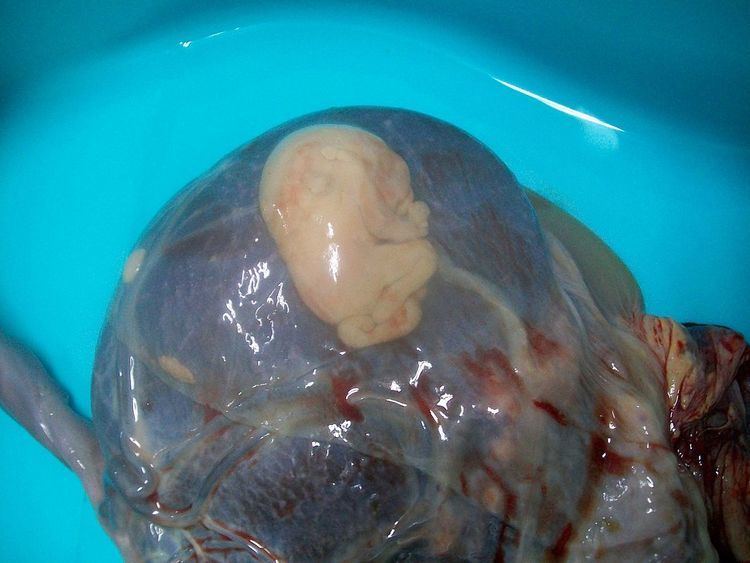Specialty obstetrics ICD-9-CM 651.33 eMedicine med/3411 | ICD-10 O31.2 DiseasesDB 31893 | |
 | ||
A vanishing twin, also known as fetal resorption, is a fetus in a multi-gestation pregnancy which dies in utero and is then partially or completely reabsorbed by the twin.
The occurrence of this phenomenon is sometimes referred to as twin embolisation syndrome or vanishing twin syndrome (VTS), since the 1980s when twin pregnancies were made visible early on by means of ultrasound.
Occasionally, rather than being completely reabsorbed, the dead fetus will be compressed by its growing twin to a flattened, parchment-like state known as fetus papyraceus.
If the fetus is absorbed completely, there are usually no further complications to the pregnancy, other than first trimester vaginal bleeding. However, if the event occurs in the second or third trimester, serious complications may include premature labor, infection due to the death of the fetus, and hemorrhage. Even at the end of the pregnancy, a low-lying fetus papyraceus may block the cervix and require a Cesarean section to deliver the living twin.
The vanished twin can die owing to a poorly implanted placenta, a developmental anomaly that may cause major organs to fail or to be missing completely, or there may be a chromosome abnormality incompatible with life. Frequently the twin is a blighted ovum, one that never developed beyond the very earliest stages of embryogenesis.
Frequency
According to Charles Boklage, a professor in the Department of Pediatrics in the Brody School of Medicine and adjunct professor of biology at East Carolina University, vanishing twins occur in up to one out of every eight multifetus pregnancies and may not even be known in most cases.
Patricia J. Sulak, M.D., has reported similar findings: "In reporting 300 early pregnancies evaluated by means of ultrasound noted 21 twins, one triplet, and one quadruplet. Only three pairs of twins survived to term (85.6% loss of the second twin), whereas the triplet pregnancy evolved into a normal twin gestation, and the quadruplet pregnancy reported here also evolved into a singleton gestation. Additionally, the triplet pregnancy reported here also evolved into a pregnancy diagnosed by means of ultrasound that evolved into a twin gestation. These very high resorption rates, which cannot be explained on the basis of the expected abortion rate, again suggest intense fetal competition for space, nutrition, or other factors during early gestation, with frequent loss or resorption of the other twin(s)."
Since it is hypothesized that in some instances vanishing twins leave no detectable trace at birth or before, it is impossible to say for certain how frequent the phenomenon is. It was hypothesized for a long time that left-handed individuals may be the survivors of "mirror image" identical twinning.
"Vanishing" twins are frequently encountered in pregnancies created as a result of IVF. Ultrasound scans are taken very early in these pregnancies (5–8 weeks), so that, where a multiple conception has occurred, it frequently happens that more than one amniotic sac can be seen in early pregnancy, whereas a few weeks later there is only one to be seen and the other has "vanished".
